How many people have walked on the moon?
Only 12 astronauts have walked on the moon. Discover who they are, which Apollo missions took them there, and when humans will return to the lunar surface.
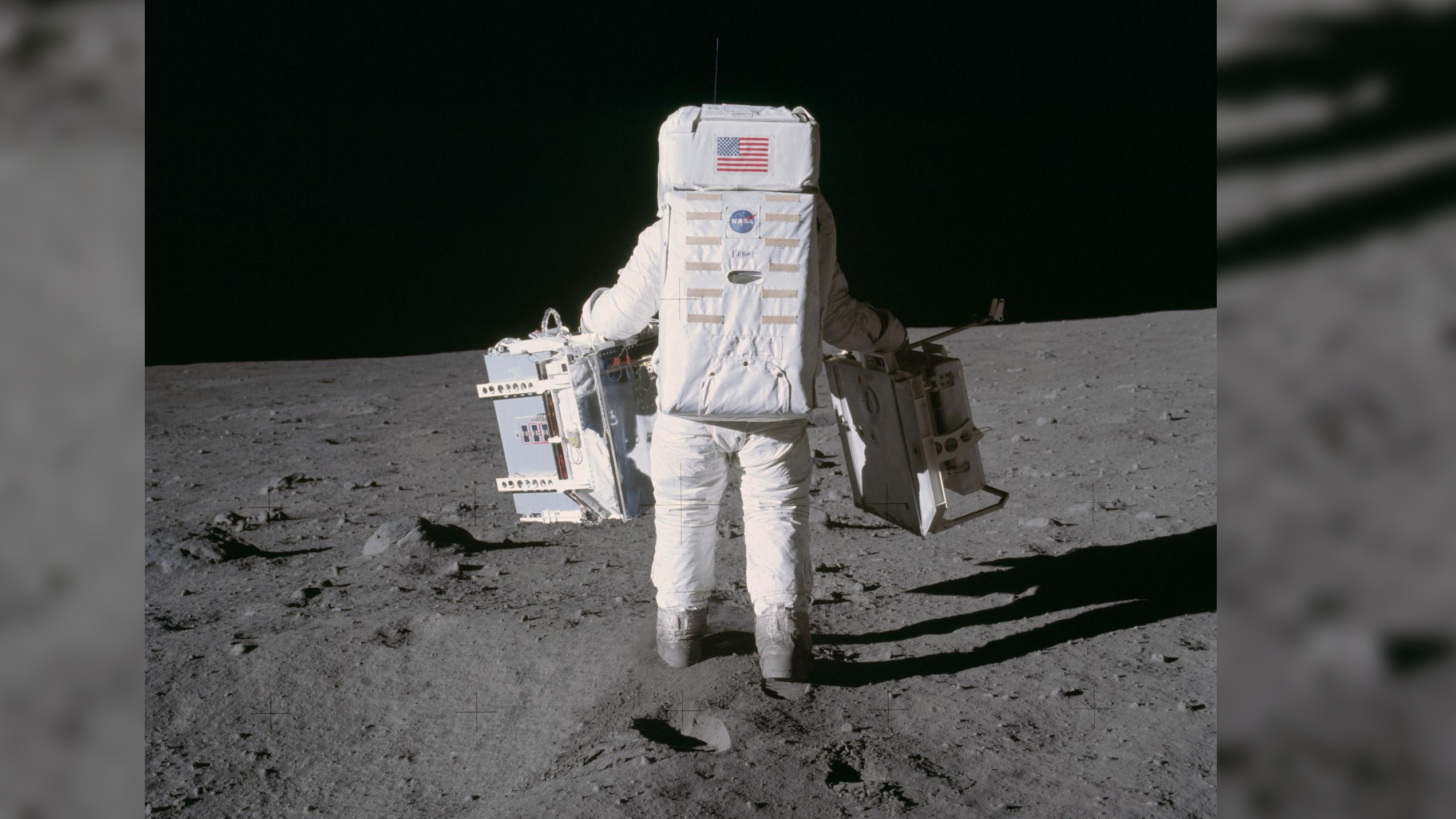
A total of 12 people have walked on the moon — all of them men, and all part of NASA's Apollo program between 1969 and 1972.
While hundreds of astronauts have traveled to space, only a select few have ever set foot on another world. The moon, Earth's only natural satellite, lies just 238,855 miles (384,400 kilometers) away, but remains one of the most exclusive destinations in human history.
Related: How NASA's Artemis moon landing with astronauts works
Frequently asked questions
How many people have walked on the moon?
A total of 12 astronauts have walked on the moon. All of them were men, and all flew as part of NASA's Apollo missions between 1969 and 1972.
Who was the first person to walk on the moon?
Neil Armstrong was the first human to walk on the moon on July 20, 1969, during NASA’s Apollo 11 mission. He was followed by Buzz Aldrin a few minutes later.
Who was the last person to walk on the moon?
Eugene "Gene" Cernan was the last person to walk on the moon on December 14, 1972, during the Apollo 17 mission. He famously said, "We leave as we came, and, God willing, as we shall return."
How many Apollo missions landed on the moon?
NASA landed six crewed Apollo missions on the moon: Apollo 11, 12, 14, 15, 16, and 17. Each mission included two astronauts who conducted moonwalks, while a third crew member remained in lunar orbit.
How many people have traveled to the moon in total?
24 astronauts have traveled to the vicinity of the moon. Of those, 12 walked on the surface and 12 remained in lunar orbit aboard the command module.
List of every astronaut to walk on the moon
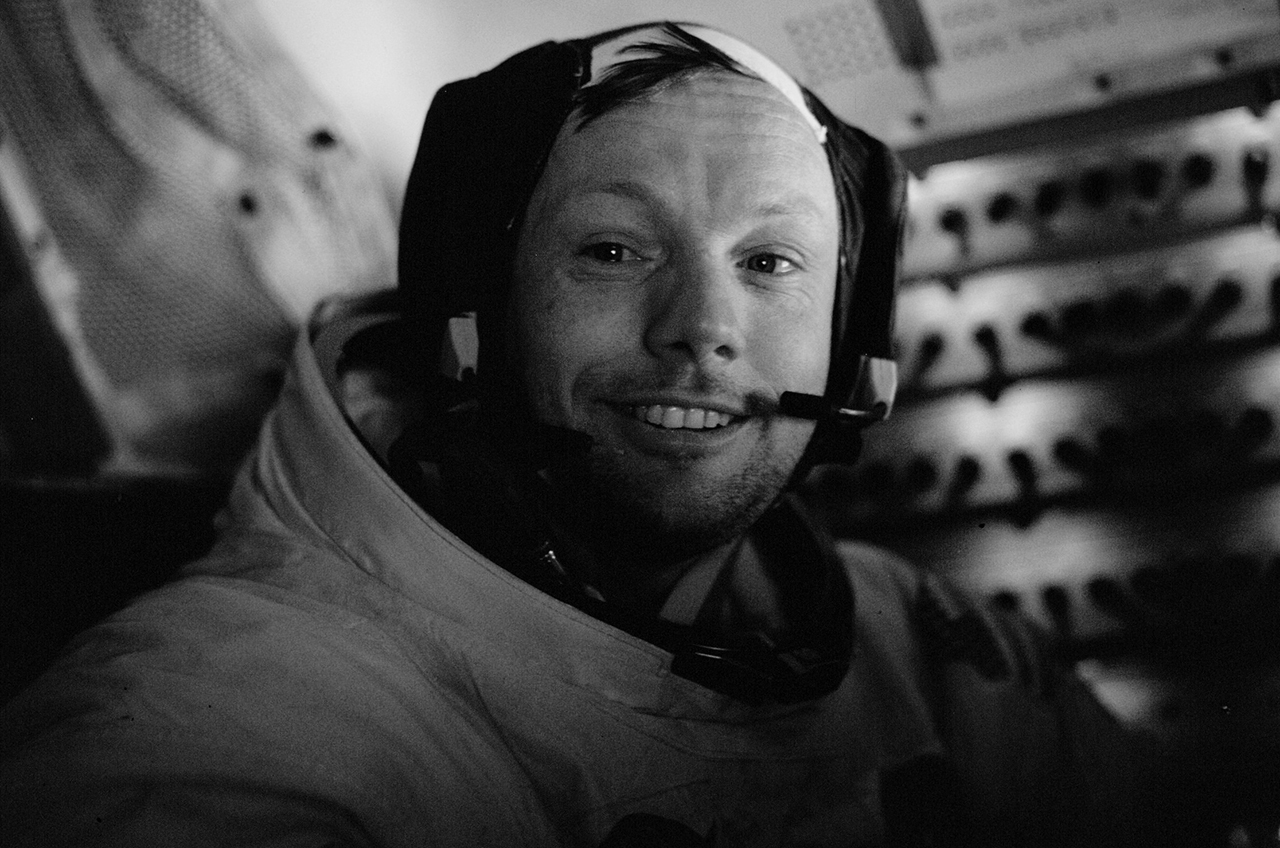
Armstrong became the first human to walk on the moon on July 20, 1969. A naval aviator and aerospace engineer, he later served as a professor of aerospace engineering and is best remembered for his iconic words: "That's one small step for [a] man, one giant leap for mankind."
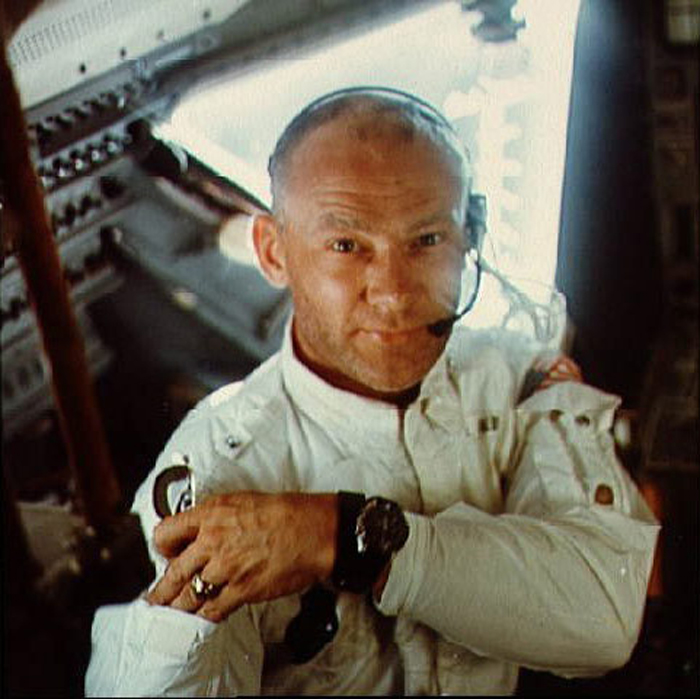
Aldrin followed Armstrong as the second person to walk on the moon. A West Point graduate and Air Force pilot with a doctorate in astronautics, he played a key role in developing spacecraft rendezvous techniques.
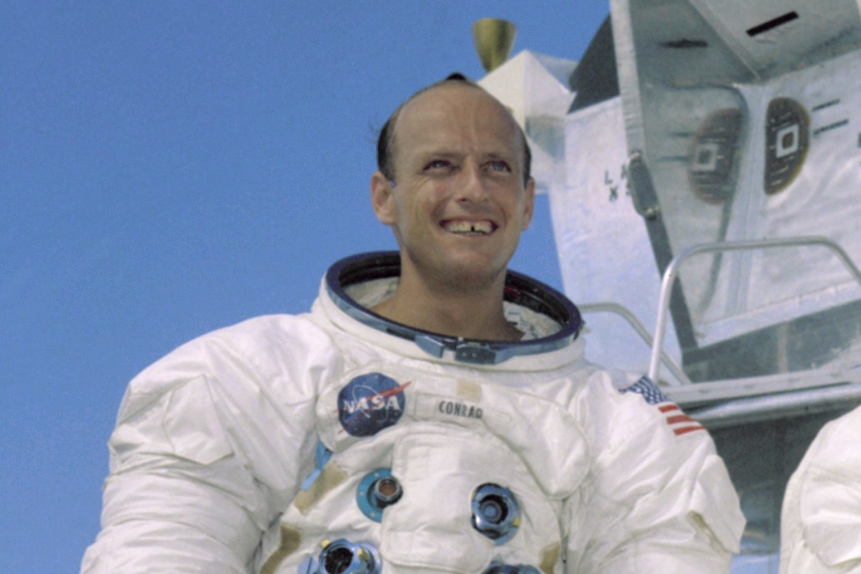
Conrad was the third person to walk on the moon, landing on November 19, 1969. Known for his humor, he was a skilled Navy test pilot and led a successful mission that demonstrated pinpoint lunar landing.
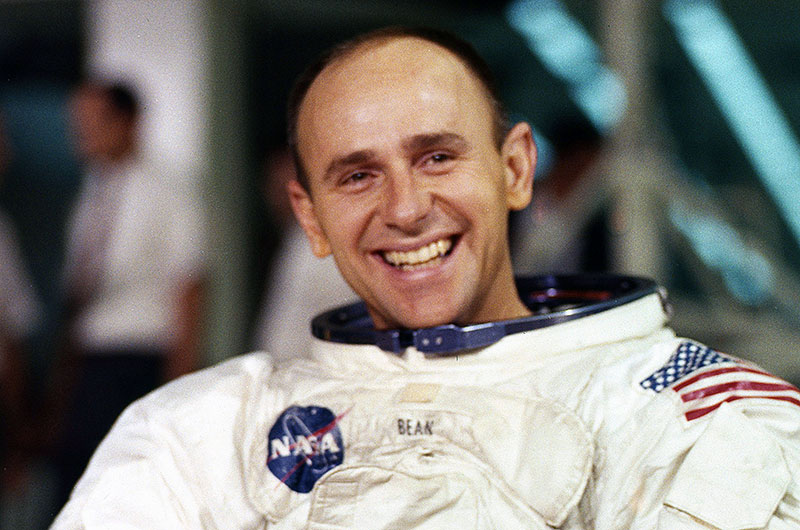
Bean became the fourth person on the moon and later pursued a career in art. He created lunar-themed paintings using textured canvas mixed with actual moon dust from his spacesuit patches.
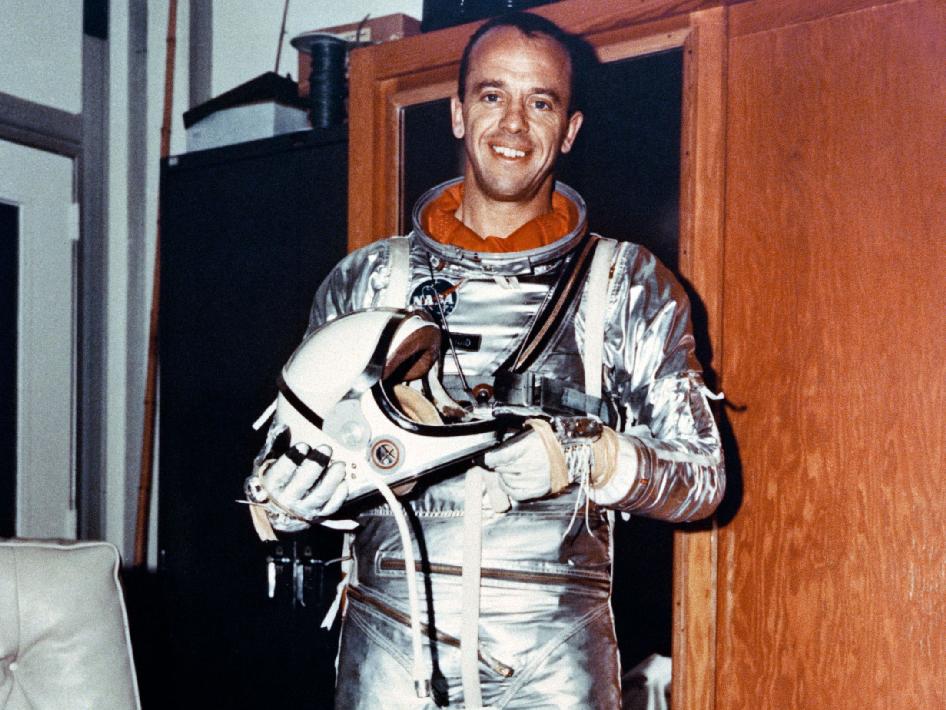
Shepard was the fifth person to walk on the moon and was also the first American in space. He famously hit two golf balls on the lunar surface during his 1971 moonwalk.
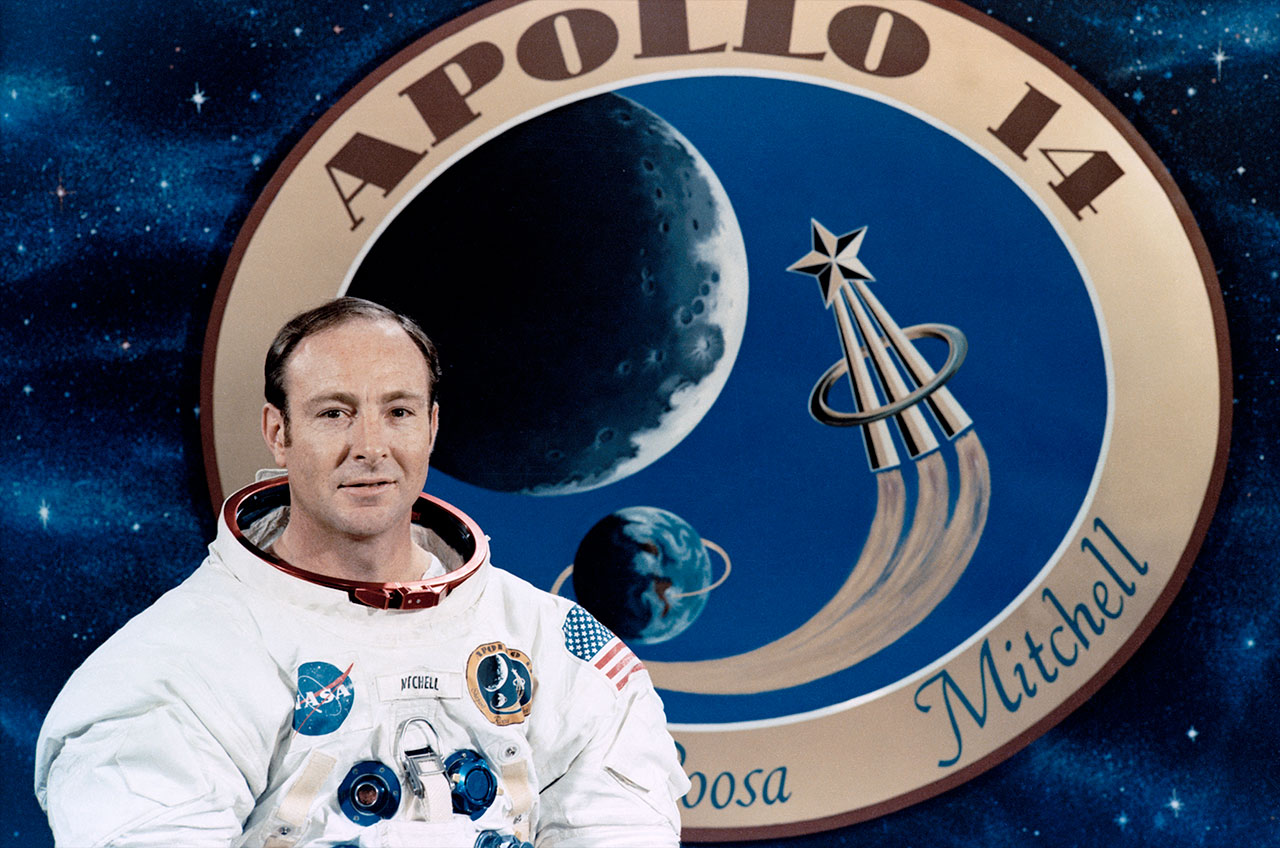
Mitchell was the sixth person to walk on the moon. A Navy pilot and MIT graduate, he later founded the Institute of Noetic Sciences to explore consciousness and human potential.
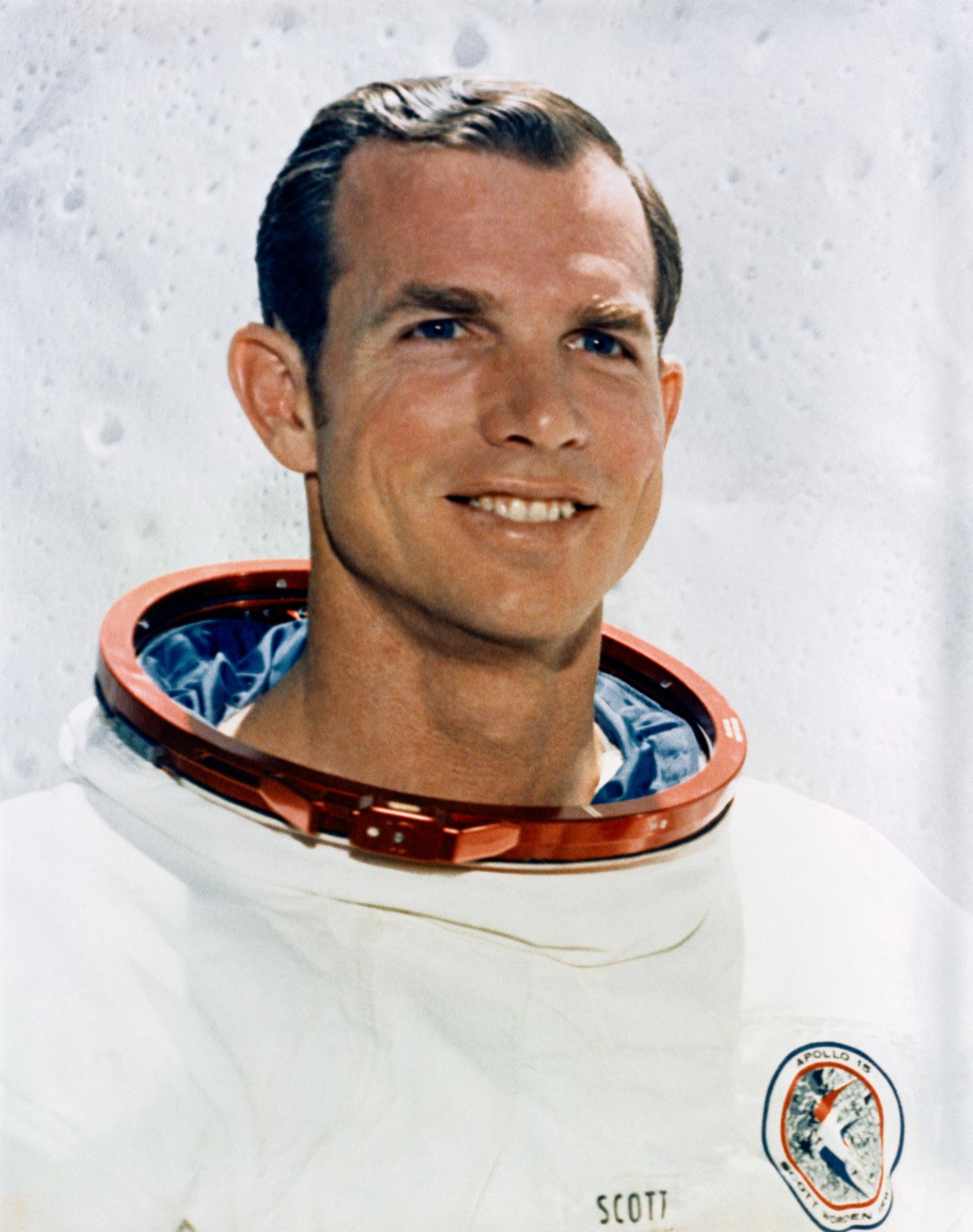
Scott was the seventh person to walk on the moon and the first to drive the Lunar Roving Vehicle. His mission included the famous demonstration of Galileo's principle by dropping a feather and hammer in the lunar vacuum.
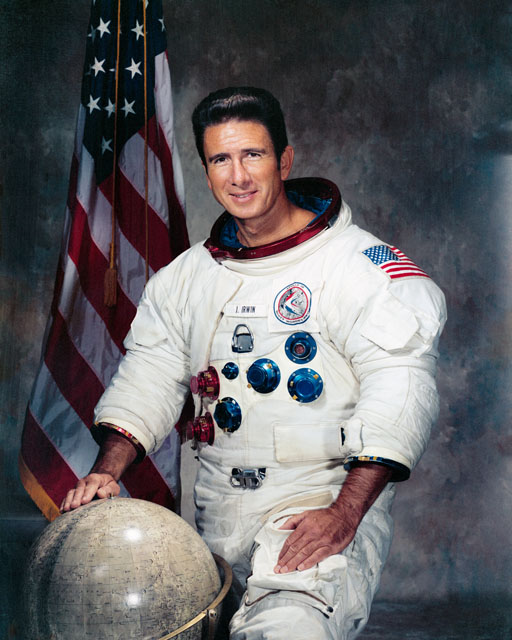
Irwin became the eighth person to walk on the moon. After the mission, he founded a Christian organization and led several expeditions searching for Noah's Ark.
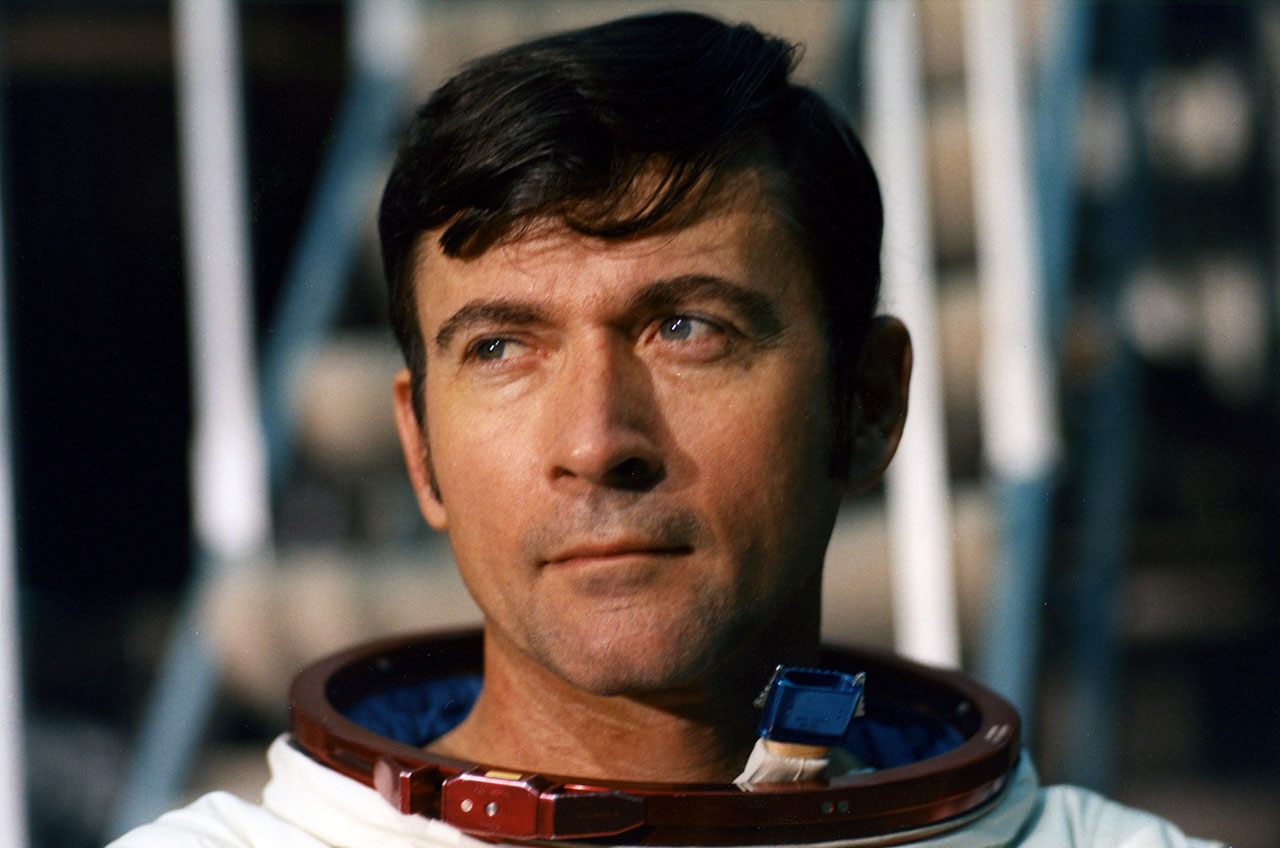
Young was the ninth moonwalker and one of NASA's most experienced astronauts, with six spaceflights. He later commanded the first space shuttle mission in 1981 and had a long career in astronaut training and safety.
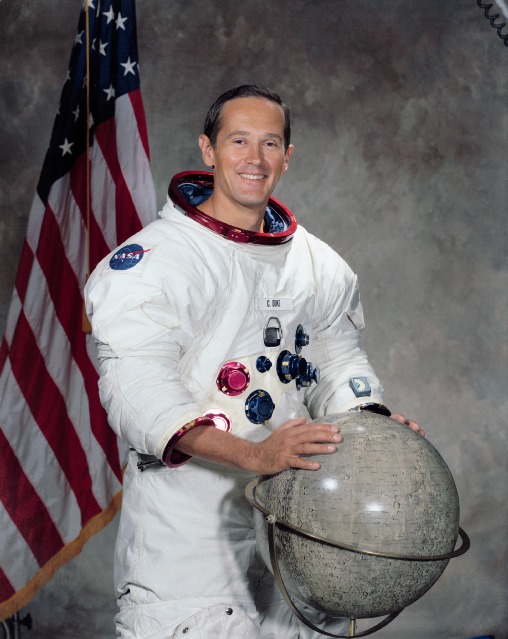
Duke was the tenth person to walk on the moon and, at age 36, the youngest. His mission collected key geological samples, and he famously left a photo of his family on the lunar surface.
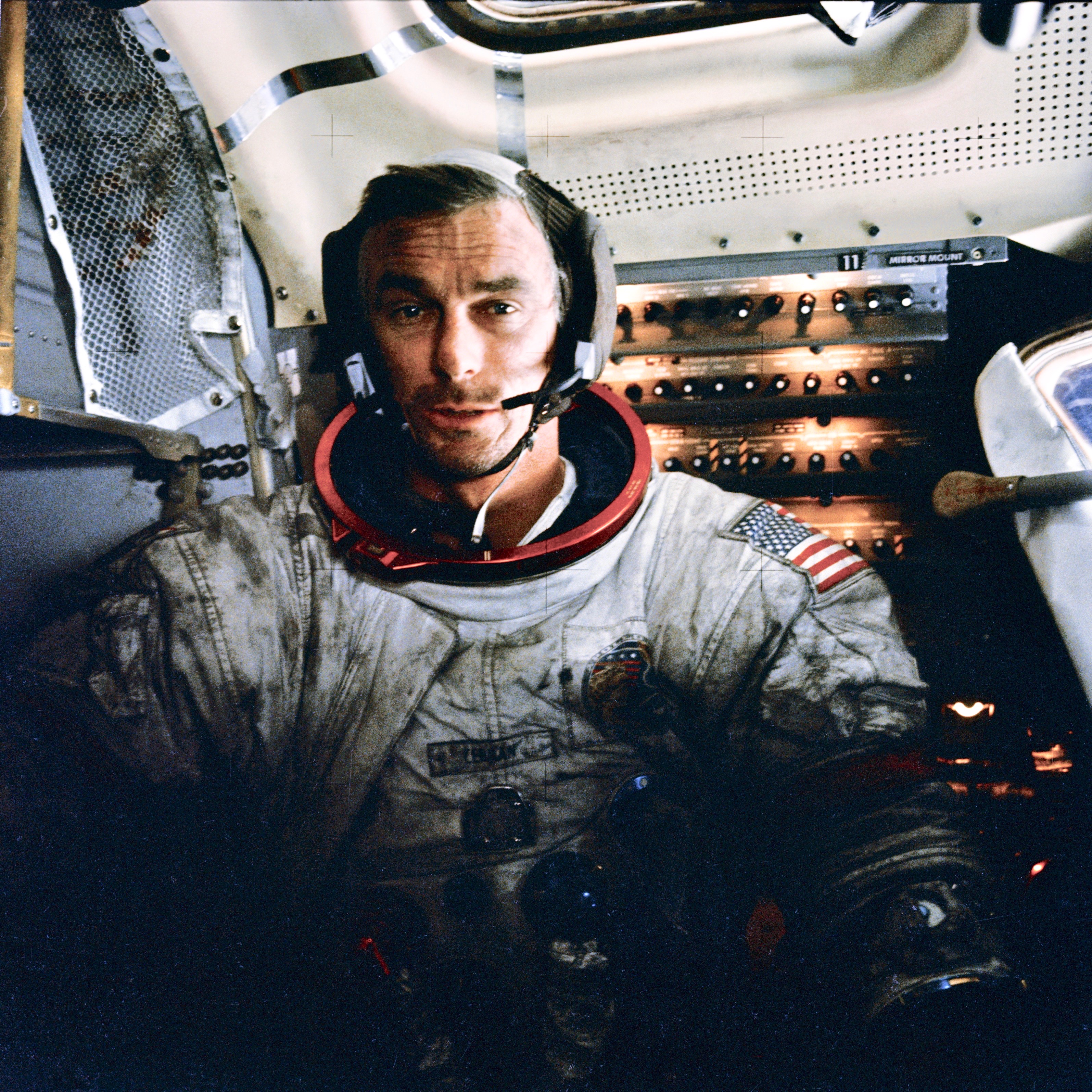
Cernan was the eleventh man to walk on the moon and the last to leave it, on December 14, 1972. A former Navy pilot and engineer, he logged over 22 hours of moonwalk time and passionately advocated for continued exploration.
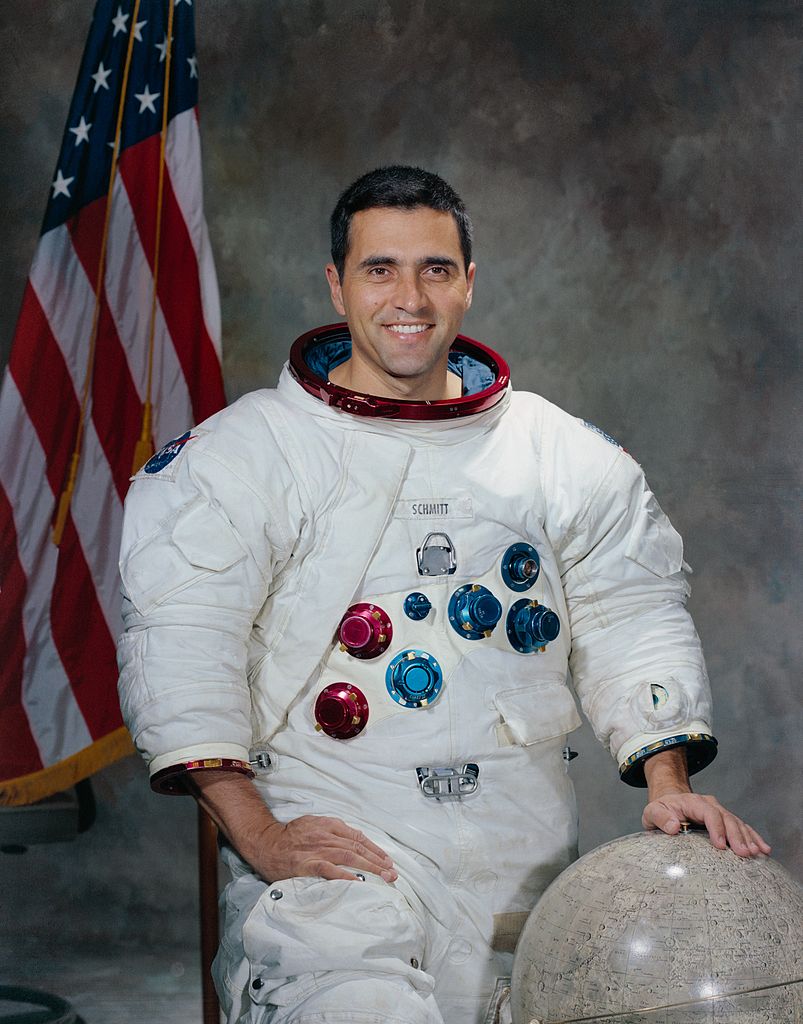
Schmitt was the twelfth and final person to walk on the moon. A trained geologist, he is the only scientist-astronaut to walk on the lunar surface and helped identify orange volcanic soil on the moon.
It was in 1962 that US President John F Kennedy committed his country to put an astronaut on the moon with the famous speech, "We choose to go to the moon in this decade and do the other things, not because they are easy, but because they are hard".
The backdrop for this ground-breaking achievement was the USA's Cold War "space race" competition with the Soviet Union, which had itself become the first nation to put a man — Yuri Gagarin — in space. Whoever got to the moon first would attain serious bragging rights.
And it was in 1969 that the ground-breaking first walk on the moon took place, with Neil Armstrong the first to make a footprint and utter the words "one small step for man, one giant leap for mankind".
Closely followed by Edwin "Buzz" Aldrin, the duo were the first of 12 people who have walked on the moon in what was termed the Apollo missions.
Breaking space news, the latest updates on rocket launches, skywatching events and more!
There are 24 people in all who have made the journey — all Americans — with the other 12 remaining on various spacecraft.
What is it like to walk on the moon?
One of the most remarkable aspects of walking on the moon is its low gravity. With the moon's gravity being about 1/6th of Earth's, you would weigh only 16% of your Earth weight and be able to jump approximately six times higher.
On the moon, you'd feel significantly lighter and notice the vivid colors due to the extremely thin atmosphere. Buzz Aldrin, the second person to walk on the moon, likened the experience to "a trampoline, but without the springiness and instability."
He described the moon's surface as being like "magnificent desolation", covered in powder and with a pitch-black sky. The Earth looked so small it could be blocked out by holding your thumb up to it.
"My most vivid memory on the moon is the beauty. The stark contrast between the brilliant grey of the moon and the blackness of space. The gray was so bright it was almost white — a sharp break between the surface and the horizon. The sun was always shining, so you didn't see stars or planets," Apollo 16 astronaut Charlie Duke told Forbes.
Setting foot on the moon had symbolic importance, but walking isn't very practical when you've got a whole lot of ground to cover and not much time.
So the invention of the Lunar Roving Vehicle (LRV) was a real game-changer for manned missions.
Used for the first time in 1971 by Apollo 15, the electric vehicle was lightweight and designed to operate in the low-gravity vacuum of the moon. It could be folded up for the flight and unpacked once the crew landed.
The rover could travel at almost 10 miles per hour (16 kilometers per hour) and had a range of about 55 miles (89 km).
Will humans walk on the moon again?
It has been a long time since humans last visited the moon, but NASA's Artemis Program aims to change that by returning humans to the lunar surface and landing the first woman and the first person of color there.
The program will collaborate with commercial and international partners to establish a permanent base on the moon, serving as a launchpad for a future mission to Mars. NASA initially aimed to reach the moon again by 2024, but the target date has been postponed to no earlier than mid-2027 with the Artemis 3 mission.
Additional resources
For more information about moon landings check out "Apollo's Legacy: Perspectives on the Moon Landings" by Roger D Launius and "Earthrise: How Man First Saw the Earth" by Robert Poole.
Bibliography
- NASA, "Who Has Walked on the Moon?", July 2020.
- Sarah Loff, "Apollo 11 Mission Overview", NASA, January 2022.
- National Air and Space Museum, "Apollo 11", accessed September 2022.
- The European Space Agency, "Lunar Exploration – ESA's missions", accessed September 2022.
- NASA, "Artemis", accessed September 2022.
- NASA, "The Apollo Program", accessed September 2022.

Mark Smith is a freelance journalist and writer in Liverpool, England. A graduate in Information Systems, he has written on business, technology and world affairs for organizations ranging from the BBC, The Guardian, The Telegraph and How It Works Magazine, as well as magazines and websites in the United States, Europe and South East Asia. Subjects of his writing have ranged from quantum computing to the VFX of Tron. He is the author of "The Entrepreneur's Guide to the Art of War," which Booklist called "Essential reading for the business leaders of tomorrow and a fascinating study of the boardroom as the new battlefield."
- Daisy DobrijevicReference Editor
You must confirm your public display name before commenting
Please logout and then login again, you will then be prompted to enter your display name.

